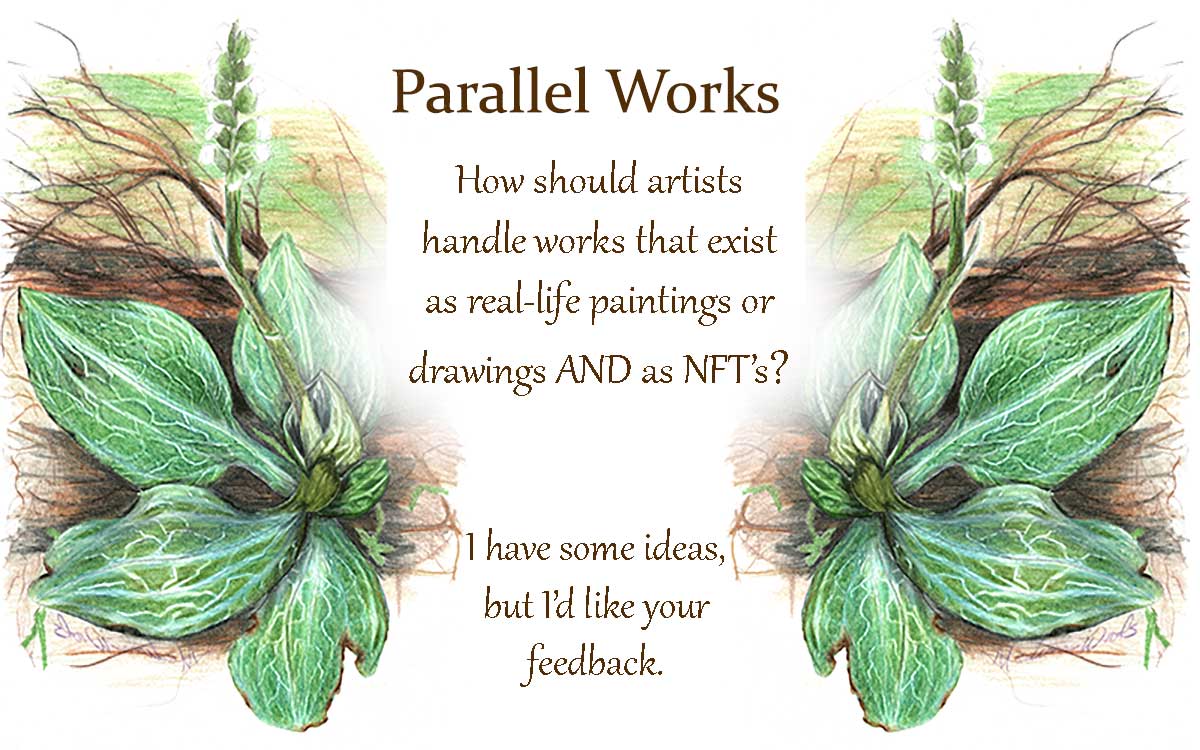As a traditional artist who has recently begun creating NFT’s from some of my works, I feel like there’s a whole lot of unexplored territory I don’t yet understand. If you’ve followed me for the past few years, you’ll know my paintings are all created from the local Ozark pigments. This lends them all a nice, earthy look and feel. I think there might be a place for that in the metaverse, too, which is why I began creating NFT art. Except now there’s this concept of Parallel Works. I’ll explain what I mean by that in the rest of this post.
I’m working on a pathway to combine both forms of art without compromising the value of either the real life work, or the NFT work. Is it even an issue to collectors in either universes? I don’t know, but I think it’s a good proactive idea to find out.
What are Parallel Works?
All of my NFT work are 1/1 and begin as real-life paintings using Ozark pigments. Sometimes I’ve already sold the real life original and later decide to make an NFT version. In that case, the NFT version will be significantly changed from the real-life original. Or I may only use a part of the real-life original.
The pair of corresponding original works, identical to each other in NFT and Real Life (RL) formats, are Parallel Works. I don’t know if there’s a phrase that already is in use to describe this, but this is the term I’ve imagined to describe this situation. I think the NFT art world is still relatively new in terms of dealing with things like this. Perhaps another, better system will emerge in time.

The Wild Ozark Solution
Whenever I make an NFT that has a real-life parallel still in my possession, the buyer of either will acquire the parallel. So if there is a parallel NFT for a real-life painting bought by a collector, that collector also acquires the NFT. And vice-versa. There is also the option to refuse either side of the parallel, which relinquishes it back to me.
Changeable art is edited with photoshop, with hand-drawn or photography-photoshop elements and effects added in. I publish these at Async (now defunct), and they’re never going to have a parallel because they’re by nature a lot changed from the original work.
At Opensea.io, I can upload the parallels and describe this situation with the offer in the unlockable content.
What if …
What happens if a real-life original sells and the collector doesn’t want the NFT? The NFT will remain for sale, but the parallel won’t be available to the NFT collector upon its sale. And vice-versa if the NFT sells and the collector doesn’t want the RL parallel. The deal is good only so long as I own both the RL and NFT.
Execution of the Parallel Works arrangement
How to execute this idea? I don’t know yet. At the moment, I’m simply putting text to explain it into descriptions for any parallel work I mint. Perhaps I’ll find someone to write a smart contract to this effect for me. I know someone who might be able to do that.
Suggestions?
I’m open to your input and ideas for how to deal with parallel works!

